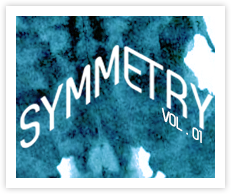

City vs.Transit Union: The Battle for Public Support
Josh-Robin Young // March 23, 2012

And it finally comes to an end. After 6 weeks of no buses, and a considerable amount of mudslinging between the two sides, news broke last week that the city and the Transit Union had reached an agreement on a new deal. The details of the 5–year deal include a $4000 signing bonus, 2% yearly wage increases, and, most importantly, a roster style of scheduling. The union will argue that they will have a large amount of control in how scheduling is managed, but in the end the city have to be considered winners in the negotiations for the simple fact that they were able to include scheduling while not giving up a lot in the process.
Now that it’s all over, I thought it would be a good time look back and grade each side’s performance. Specifically, I want to look at how each party communicated and engaged with the general public during the strike in order to gain support. With public opinion playing such a large part in the process, the battle for public support greatly influenced who won this 6-week staredown.
In its attempt to reach out to residents, HRM used an “informative” tactic. It based its arguments on facts and data and showed how the decisions would affect the lives of Haligonians. The argument was that the city lost millions of dollars in overtime wages every year with the last deal, money that ultimately came from the pockets of the city’s residents. A new deal and style of scheduling would ultimately eliminate this problem.The city summed up this position on their website when they stated, “It is about the money – your money.”
The city successfully used the Internet to promote this argument in a number of ways. A section was written on the city’s website explaining exactly why they must change the system. There was a lengthy Q&A, as well as a section with constant updates on the status of the negotiations. HRM took advantage of social media by posting videos on YouTube of the director of Metro Transit responding to questions asked by people on Twitter. These videos not only showed that HRM was willing to engage people through social media, not the norm in today’s politics, but also that HRM truly realized the importance of properly informing (or convincing?) the public.
HRM’s representation in other areas was not as impressive. Remarks made by the mayor were not always sensible, and the secretive nature of the council’s meetings on the issue did not reinforce this same culture of transparency.
The Union used a very different tactic in its attempt to win public support. Rather than using facts, they attempted to win over Haligonians by playing on their values. They continually stated (contrary to the statement on the HRM website, mentioned above) that holding out is not about the money – it’s about quality of life. The message being repeated was that the deal proposed by the city would drastically reduce the flexibility of bus drivers’ lifestyles, a common concern being childcare and dealing with long hours.
The Union, despite continued attempts, failed to gain widespread public sympathy. This was in large part due to the many small blunders they made that had a detrimental effect on their public image. For example, stating early in the negotiations that the contracting-out issue was the only thing stopping a deal from getting done and then eventually holding out for the scheduling issue as well made the Union seem insincere and greedy in the eyes of many. Their attempts to pressure the city by holding up the Access-a-Bus and snowplow service further hurt their cause by painting the group as having a disregard for public safety.
Taking into full account the performance of both sides, the city undoubtedly did a better job communicating with residents in order to gain their support, and the final deal reflects this. In the weeks leading up to the deal getting done, the city was able to pressure the union with remarks that they would submit a “final” deal and that they may have to renege on past concession were it not accepted.
It must be taken into account that the Union entered the contest with a considerable handicap by the simple fact that any benefits they gained in the deal would be paid for by taxpayers. However, they also had a real opportunity to turn Haligonians against a municipal government that already had many detractors. Their failure to use their available communication methods effectively and decision to employ aggressive protest tactics ensured that they lost public favour. The city, however, proactively engaged their citizens and actively sought out their support. This impressive display allowed the city to retain enough public support to hold out until the union gave in on the scheduling issue and a deal was struck that, for the city, was worth the wait.
References
CBC News. (February 2, 2012). Transit strike hits halifax. Retrieved from http://www.cbc.ca/news/canada/nova-scotia/story/2012/02/02/ns-transit-strike-halifax.html
CBC News. (March 2, 2012). Metro transit strike savings equal to 2011 deficit. Retrieved from http://www.cbc.ca/news/canada/nova-scotia/story/2012/03/02/ns-transit-strike-costs.html
Fraser, L. (March 13, 2012). Halifax transit strike over. Retrieved from http://www.thechronicleherald.ca/metro/73157-halifax-transit-strike-over
Fraser, L. (January 30, 2012). Transit union, city still negotiating. Retrieved from http://thechronicleherald.ca/metro/57117-transit-union-city-still-negotiating
